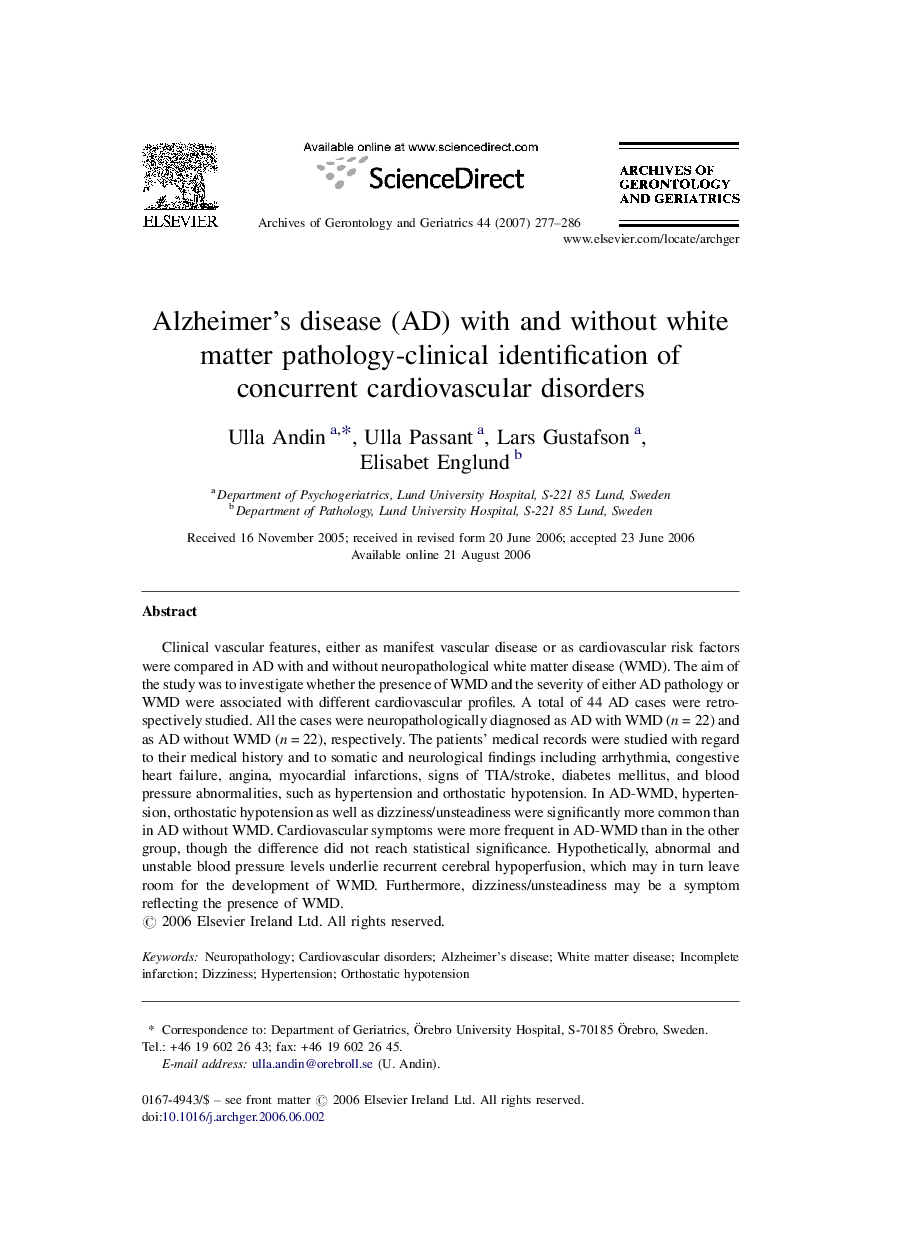| Article ID | Journal | Published Year | Pages | File Type |
|---|---|---|---|---|
| 1904184 | Archives of Gerontology and Geriatrics | 2007 | 10 Pages |
Clinical vascular features, either as manifest vascular disease or as cardiovascular risk factors were compared in AD with and without neuropathological white matter disease (WMD). The aim of the study was to investigate whether the presence of WMD and the severity of either AD pathology or WMD were associated with different cardiovascular profiles. A total of 44 AD cases were retrospectively studied. All the cases were neuropathologically diagnosed as AD with WMD (n = 22) and as AD without WMD (n = 22), respectively. The patients’ medical records were studied with regard to their medical history and to somatic and neurological findings including arrhythmia, congestive heart failure, angina, myocardial infarctions, signs of TIA/stroke, diabetes mellitus, and blood pressure abnormalities, such as hypertension and orthostatic hypotension. In AD-WMD, hypertension, orthostatic hypotension as well as dizziness/unsteadiness were significantly more common than in AD without WMD. Cardiovascular symptoms were more frequent in AD-WMD than in the other group, though the difference did not reach statistical significance. Hypothetically, abnormal and unstable blood pressure levels underlie recurrent cerebral hypoperfusion, which may in turn leave room for the development of WMD. Furthermore, dizziness/unsteadiness may be a symptom reflecting the presence of WMD.
